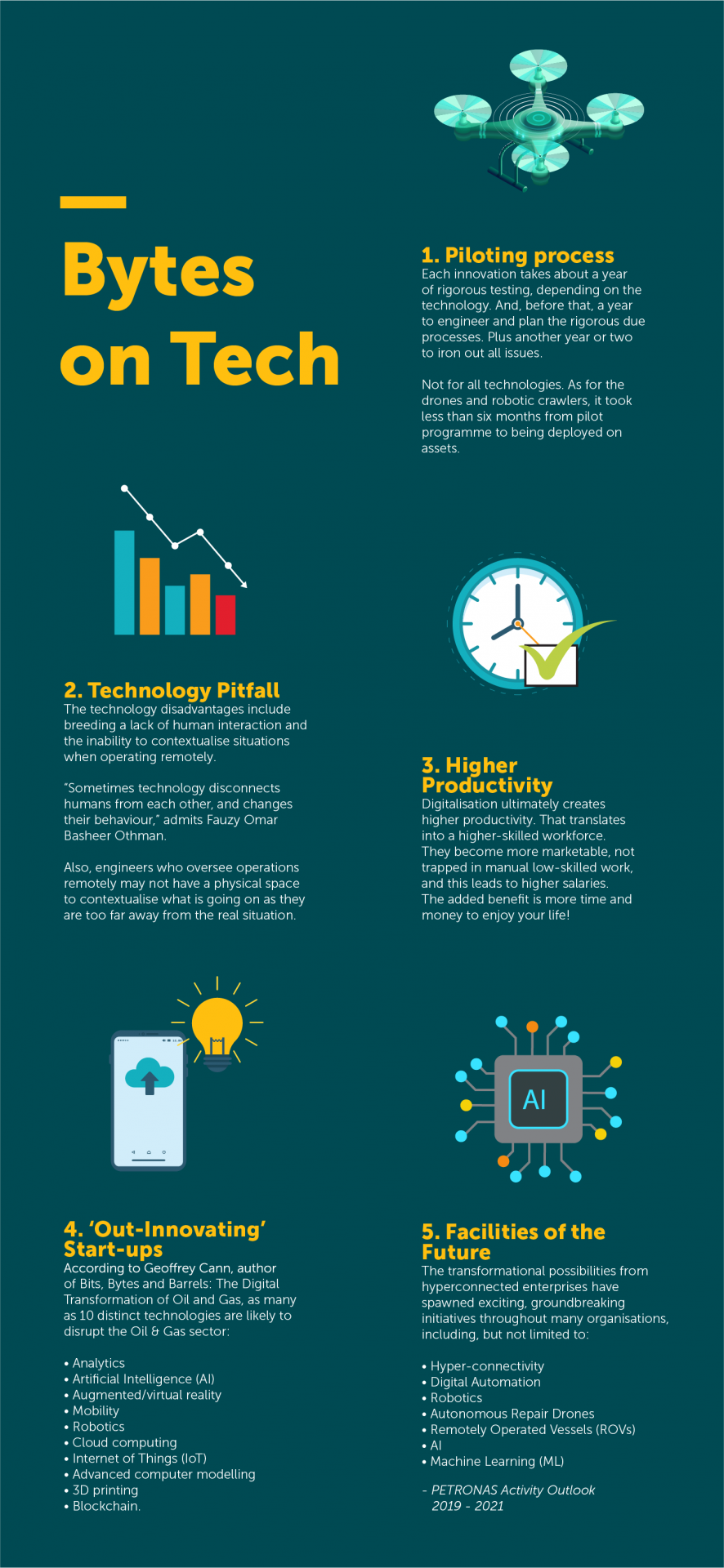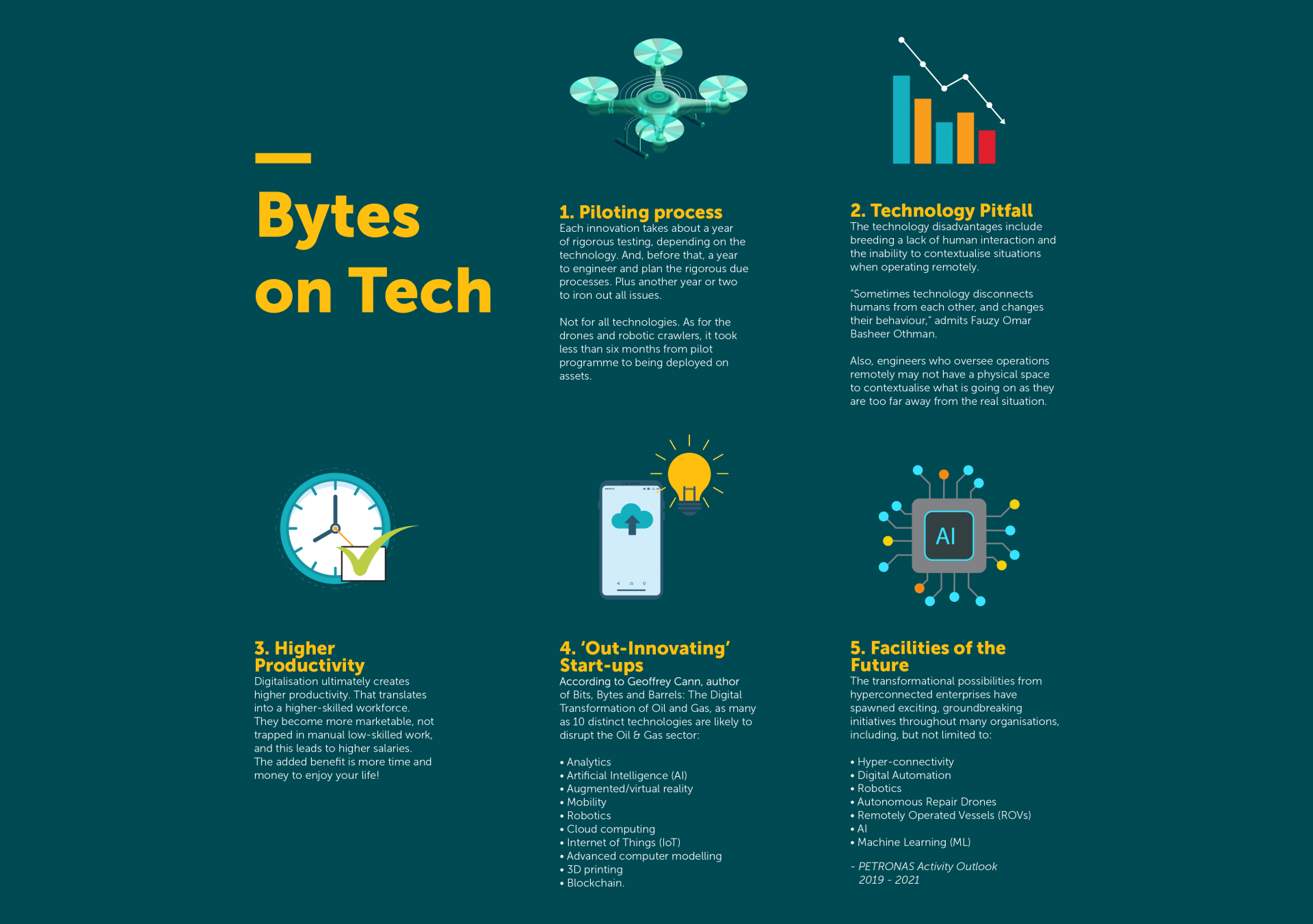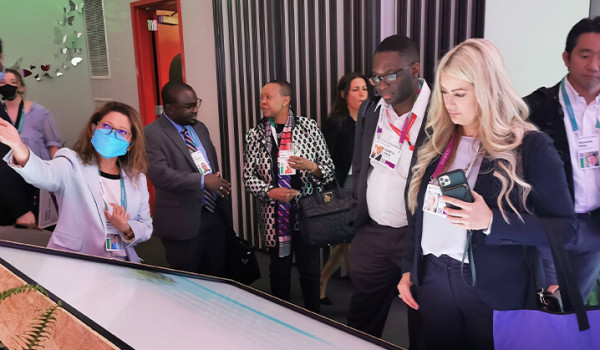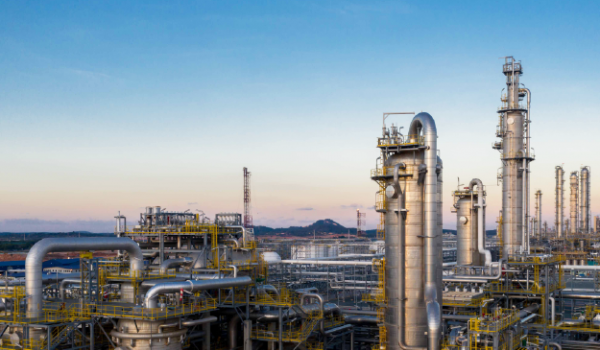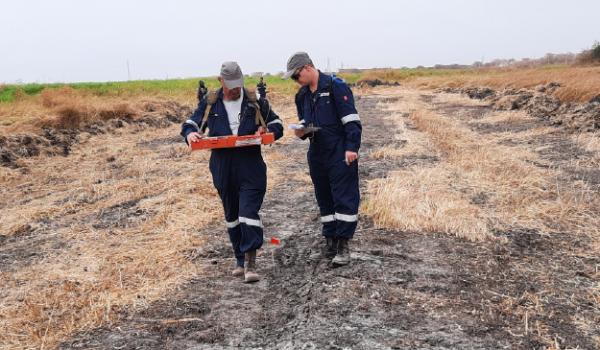It is dark and damp. The space is narrow, bleak and restrictive. Yet, as soon as the lights flash on, guiding the way, the task begins. Creeping through the gloomy space, it meticulously and methodically assesses the structural integrity of a gas pipeline. It is a robotic crawler, on inspection mode.
19/12/2019 • 7 mins read
The New Age of Oil and Gas
Translating technology into business viability: reducing costs, improving productivity, and increasing efficiency.
Jacqueline Pereira
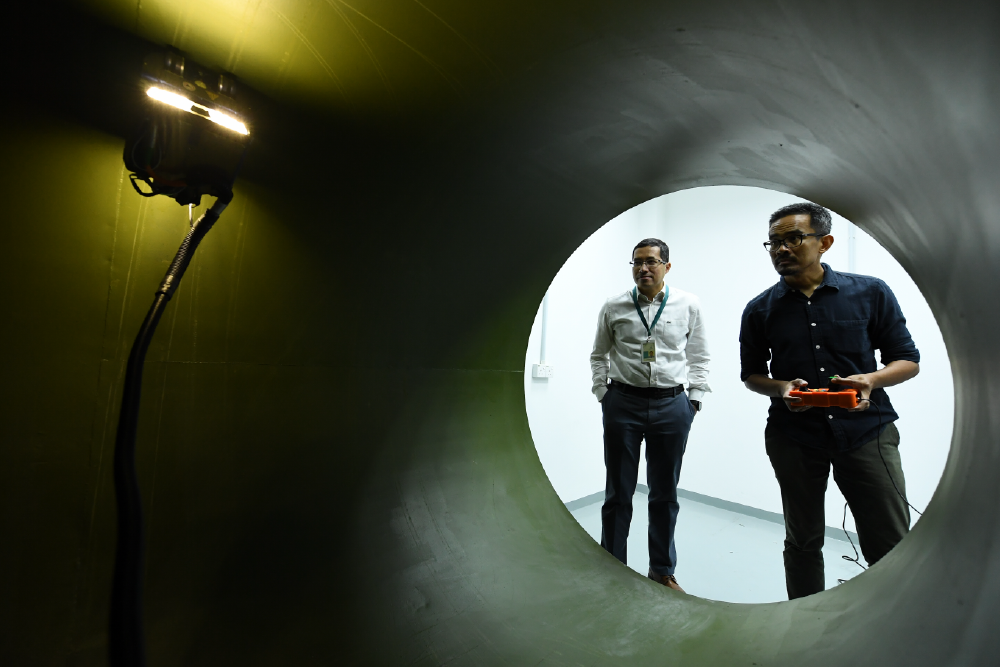
Remotely operated, the crawlers’ inherent systems transmit the necessary data instantaneously. These digital solutions, through innovation and new technologies, bring reduced cost, increased efficiency, and fewer safety concerns.
According to a recent Accenture survey, 97 per cent of upstream and 91 per cent of downstream oil and gas executives report that emerging technologies have sped up the pace of innovation in their organisations over the past three years.
Similarly, as volatility in the sector continues, PETRONAS confronts growing disruption and transitioning challenges through technology. Its Facilities of the Future (FoF) programme, under the purview of Group Research & Technology (GR&T), aims to seek methods to deploy technology - digital, data analytics, automation, and robotic solutions - to its assets.
Transforming the Industry
“To be relevant in the future we need to have a lower base cost, meaning how to do things very efficiently and productively,” states Fauzy Omar Basheer Othman, Head of FoF. With these new methods, he adds, technology will unlock new opportunities beyond the realm of the oil and gas industry. “Maybe that business does not exist today, but it could exist tomorrow. That’s what we do here.”
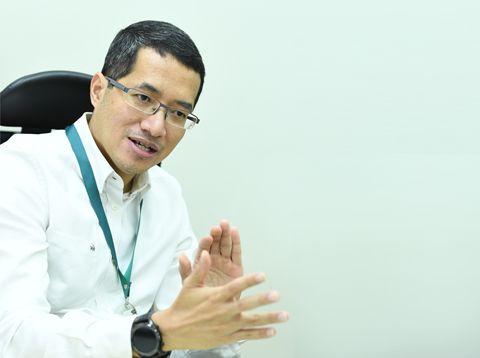
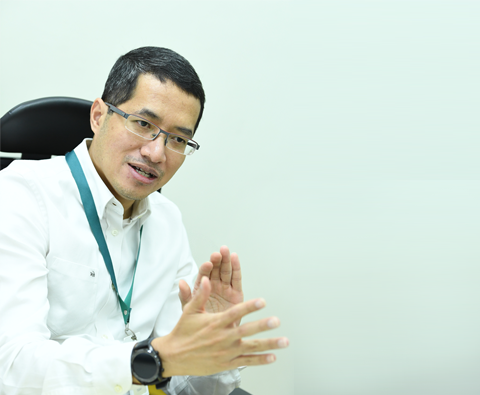
Fauzy Omar Basheer Othman
Head of Facilities of the FutureGroup Research and Technology, PETRONAS
In June this year, the opening speech at the Future Oil & Gas Conference in Aberdeen reiterated the gravity of digitalisation. The new wave of technologies will change the way businesses and operations run. Significantly, this includes workforce skills.
Indeed, much of the Conference conversation focused on skills issues: retraining the existing workforce, attracting young people into the industry, and preparing the future workforce for jobs that do not yet exist.
Investing in agility through digital innovation is one of the four essential strategies to focus on in this transition period. So claims The Oil and Gas Trends 2019 report, Building growth strategies on shifting sands, part of PwC’s 22nd Annual Global CEO Survey trends series. The report notes that, oil and gas companies are expected to use new technology to increase efficiency in the areas of project management, operations, and the supply chain in the next seven years. Companies with a head start on their competition through digital innovation will have a distinct advantage.
The digital strategies include using drones, robotics, artificial intelligence (AI), and virtual reality to make drilling and exploration projects more efficient, speed up resource recovery, and lower labour costs. Since company digitalisation templates will vary, the report calls for firms to make bold technology decisions, in part to lead to additional innovation.
For Fauzy, an aeronautical engineer, in this business machines will take up repetitive, low-analytical and hazardous work. Currently, in substituting humans to address brownfield assets, the FoF systems automate data capture through Internet of Things (IoT), communicate via high-capacity, low-latency 5G networks and safe remote control and operations from shore. Fauzy stresses that the brownfield benefits are immediate: automated data collection, wireless transmissions, and instantaneous transfer. He declares, “We are changing how people work and the roles they play at work.”
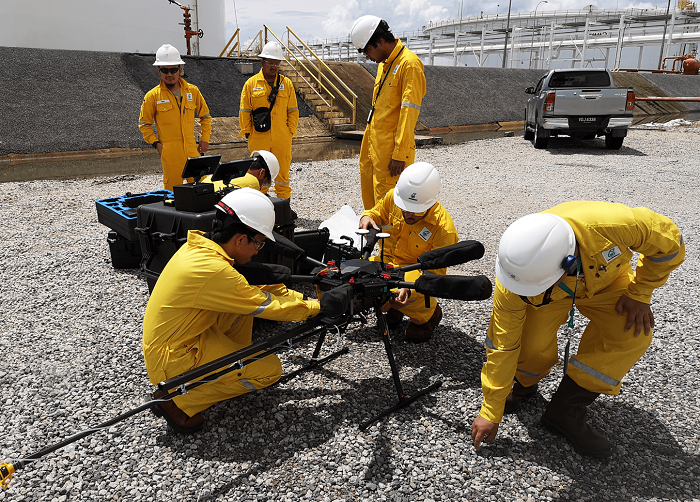
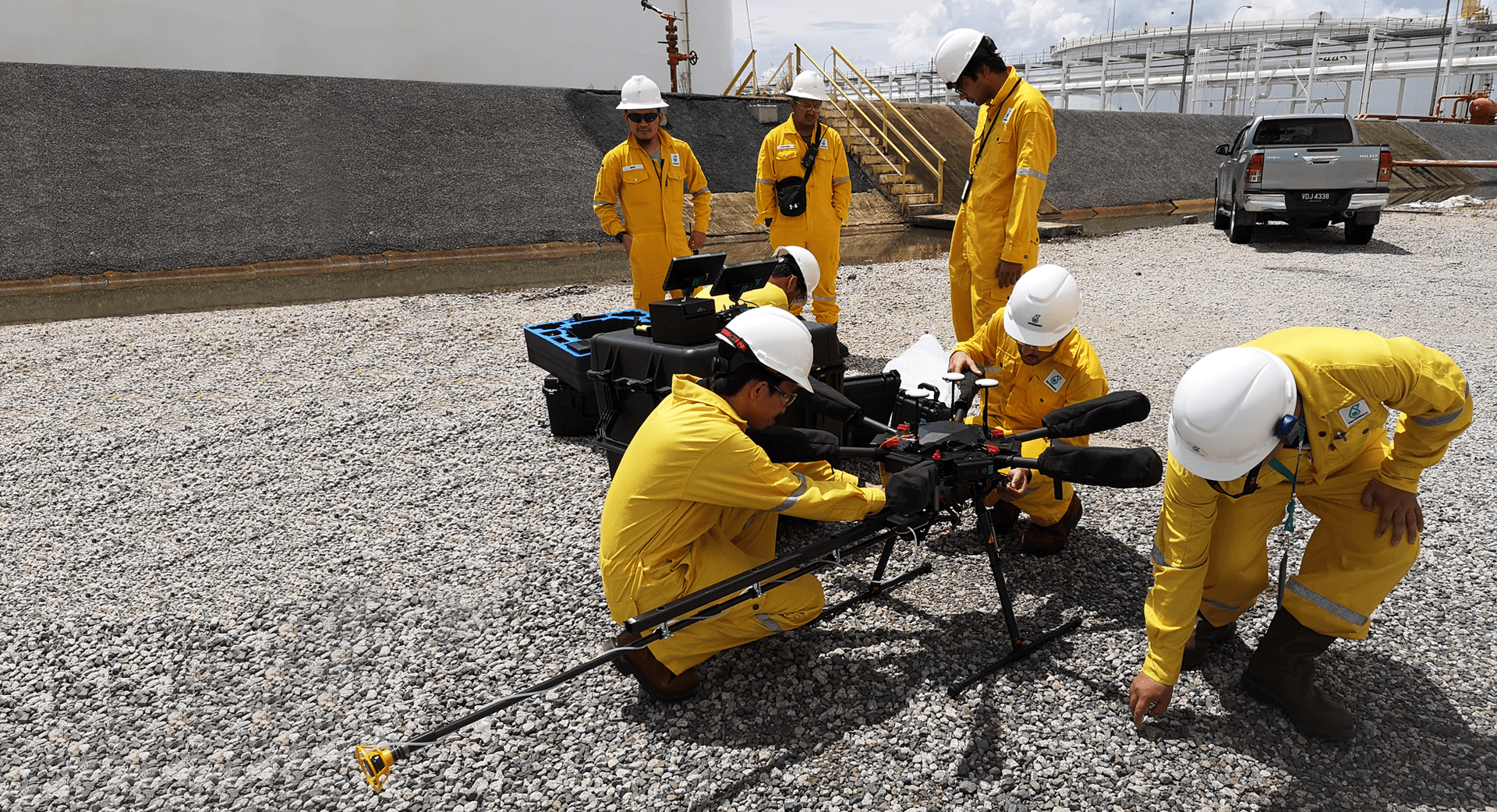
Facilities of the Future
Since 2017, when the FoF programme was initiated, the intention was to bring this visionary platform, “a plant that only exists in our imagination, into reality, bringing the future to today.” Fauzy clarifies that – to translate ideas and concepts that exist on paper and presentation decks into real, functioning products - they rigorously test, pilot, install, and validate the new technologies.
These technologies are not created specifically for the oil and gas business, but originate from others such as computer, automation or electronic industries. In leading his team of almost 50 staff, Fauzy, as always, revels in innovation and technology. He is appreciative of his work scope that allows his inventor streak to thrive, allowing him the opportunity to look out for innovative technologies and improve them to benefit the industry. He takes this as a sign of progress, elevating the company’s aims beyond perception and optics. “Belief is as important. This is an opportunity for us to believe in ourselves first, before reaching out to our customers and partners.”
The key FoF focus is to de-risk new technologies through rigorous physical, virtual development and validation. Before deploying robots on their assets on a large scale, the FoF teams ensure that they first learn how to use the robots and improve on them. And, crucially, to capture all the lessons learnt. Well controlled pilot programmes are put in place to observe results and measure the value and efficiency of replacing, for example, a human inspector with a robotic version.
“Robots definitely operate better than human beings because they have no emotions and are consistent in repeatability,” affirms Fauzy. Humans come with plenty of factors that affect their job-performing effectiveness, although they excel in perception and analysis. “I don’t think robots will replace humans in their entirety. There are spaces where humans perform the job better, and others where robots do. Our job is to find which one is which.”
As of this year, some FoF creations have been stationed in real situations in operating assets, in some cases reducing costs by about 70 per cent, saving almost RM55,000 per vessel. Magnetic robotic crawlers have replaced human inspectors in confined spaces to eliminate scaffolding costs and human safety risks. Drones, fitted with probes, execute metal thickness inspection at height. Drones also capture thermal images through autonomous surveillance, for perimeter security purposes especially at night.
“There are spaces where humans perform the job better, and others where robots do. Our job is to find which one is which.”
Fauzy Omar Basheer Othman
Head, Facilities of the Future
Value for Creation
Apart from robotic operations, FoF automates subsea equipment, placing production and processing devices underwater instead of on platforms. To reduce costs, instead of building vessels on which to place the apparatus, they chose the sea bed. As the equipment is unmanned and self-contained, thus no emissions are released into the 70-metre shallow seas. While some seabed-living marine life may be displaced, he says, in proportion to the space that the equipment requires the damage is very minimal.
Also in the works are self-healing materials and - at end of field life – low cost decompression methods. FoF does not focus solely on blue sky innovations, but instead collaborate with partners and research teams from Universiti Teknologi PETRONAS (UTP) at the beginning of the concept, and then customise according to their needs for the industry. Their applied research and applied technology, when used, become the end product of added benefit.
Improving on external innovations, FoF validates functionality. However, there have been times when the outcomes were not as expected. While the reasons could be many, Fauzy states, “We don’t know what we don’t know. That’s the main reason.” He admits there are always limitations to our imagination and knowledge. “It’s only in the trials there is proof of performance.”
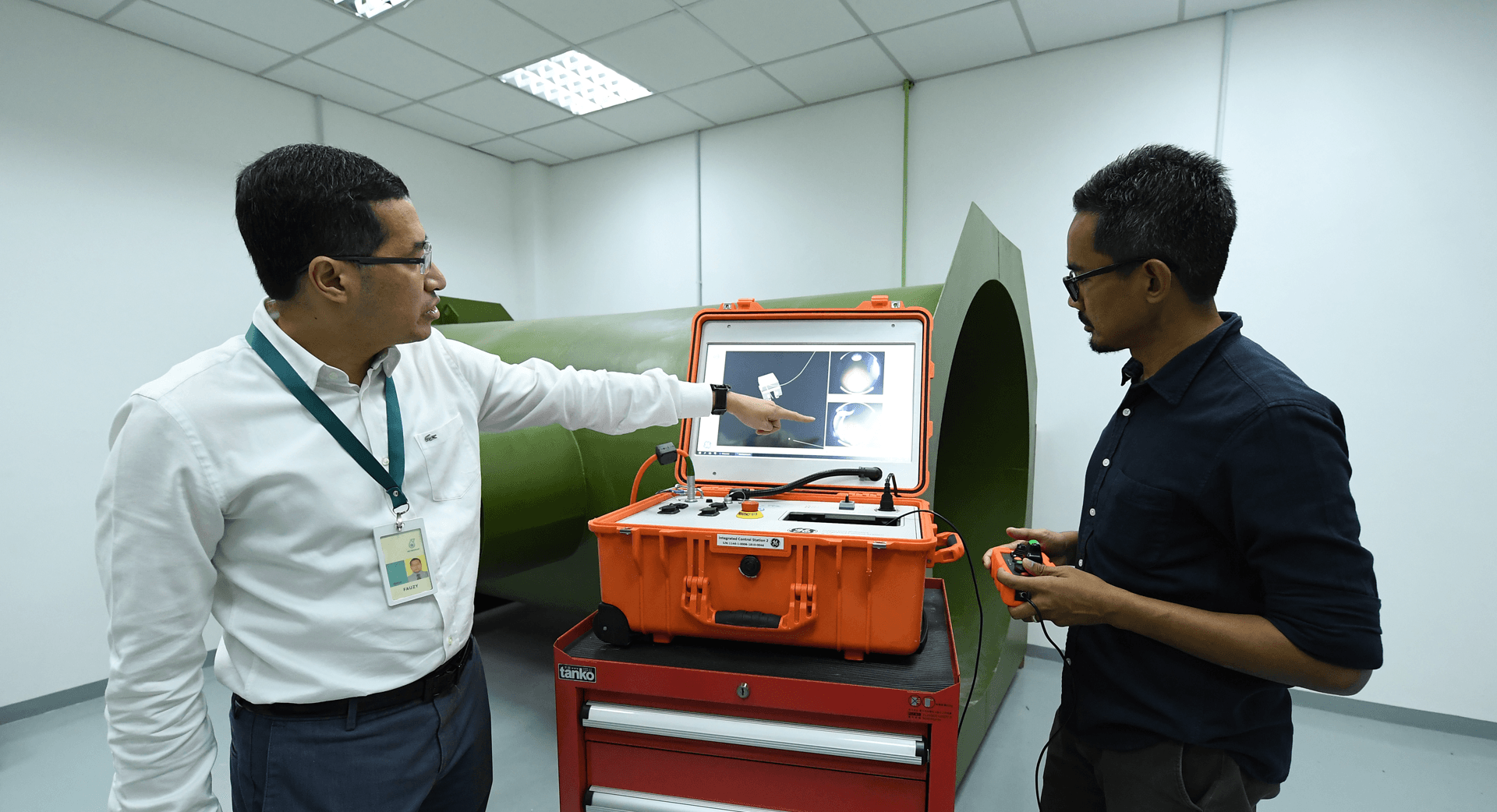
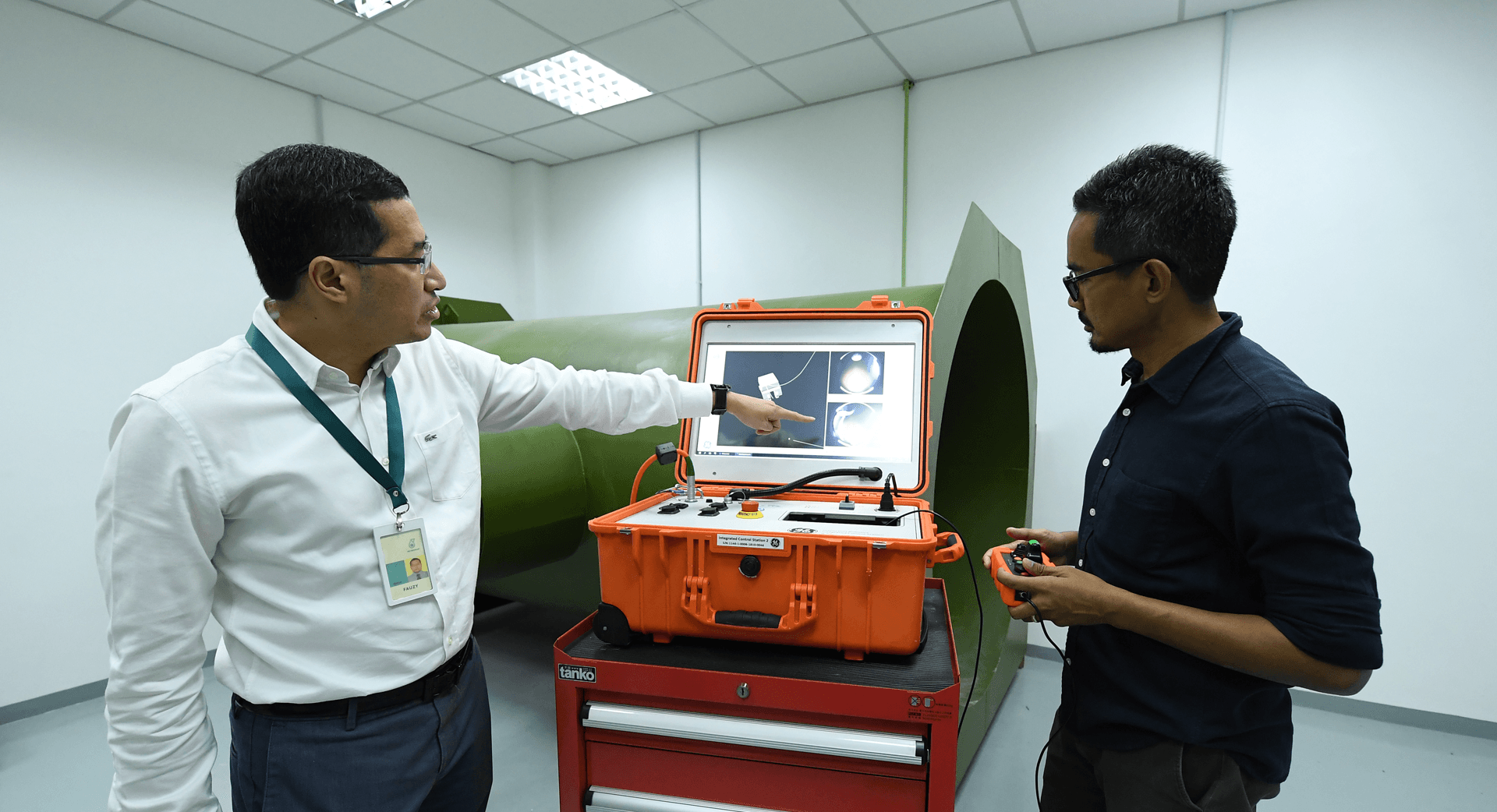
Similarly, resistance to digitalisation goes beyond vested interests. “The majority of people are not resistant to technology or changes, they are concerned about what value it creates. And they want it validated that it works all the time.” While that is a fair prerequisite, Fauzy believes there is no democracy in technology. “In other words, with technology you have to be deterministic. It works. Use it and wean off the current way of doing things.”
Challenging the Mentality
Fauzy recognises that embracing technology and digitalisation at work is not his biggest challenge. In his experience, company culture and individual mentality are his biggest obstacles. Rather than these barriers starting at the implementation stages, they begin as early as the ideation stages. “Anywhere in the world in this industry, people are afraid of being displaced by technology. Even me. I could be automated one day.”
While he understands the underlying aversion, he is certain that technology is meant to simplify tasks. In the course of this process, inadvertently, some job functions become displaced. “It’s not the intention, but it’s the consequence of technology. Jobs don’t need to be protected, but we need to protect our workers.”
Upskilling is needed, especially in developing skills to operate robots. Fauzy fears that those who do not embrace this change will be left out. He finds the best way to mitigate the impact of displacement is to provide workers with the right skill sets so that they perform higher analytical functions which robots and machines are not designed for or are incapable of doing yet.
Being passionate about technology, he says, also creates new business opportunities. “Business cases do not come from the inventors, but from innovative advocates within the business. Since new technologies do not pop out of the box in perfect condition, he asserts, effort is required to refine the technology and create robust work processes. “This application takes time, money, and grit which will, in return, require the support of the majority, if not all, in organisations.”
As for innovators or inventors, Fauzy declares they are naturally risk-takers who do not over-analyse value creation. “We simplify it so that we can prove it, unlike the sceptics who over-emphasise and over-analyse value, against innovation.” He adds that innovation takes courage, a little risk-taking and money that you can live without in order to risk innovating.
The perception also exists that inventors must come up with a business case. Fauzy begs to differ: “The inventor invents. You need leaders to advocate the risks, to take a leap of faith and to prove that it works.”
